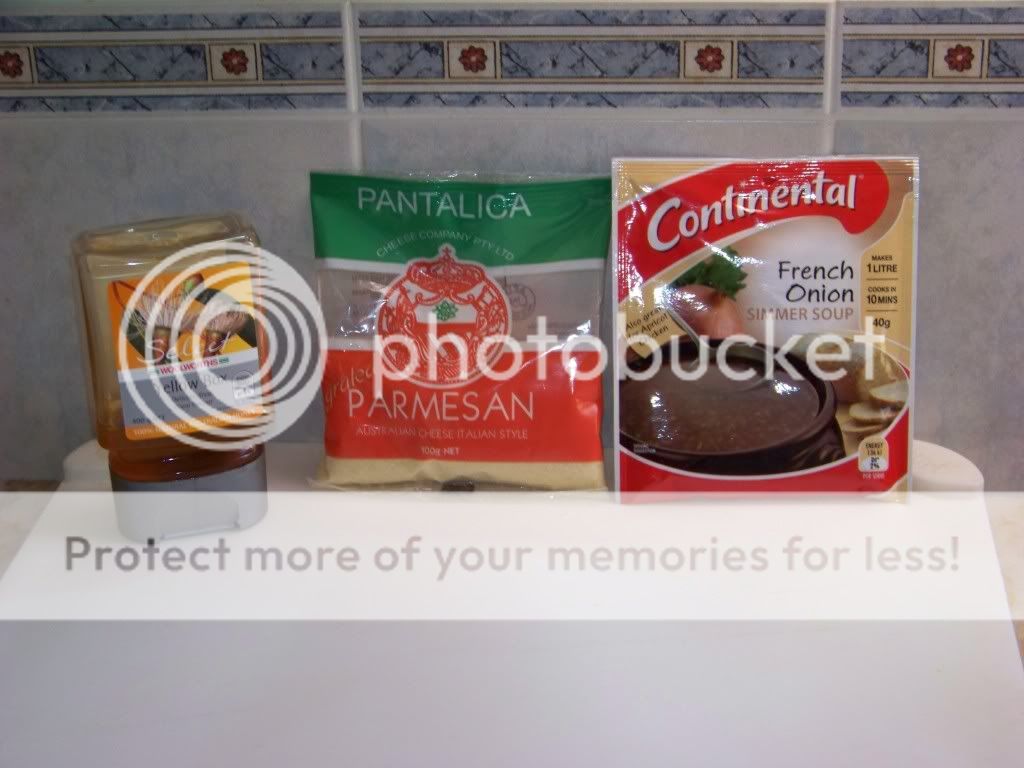Thursday, September 30, 2010
Boorowa's Irish Woolfest
Next Sunday I will be off to the Boorowa Irish Woolfest and the now popular "Running of the Sheep".
Up to 15,000 people are expected to line Boorowa's main street to watch the town's annual Running of the Sheep and celebrate the district's Irish heritage. It will be the 13th time the event, part of Boorowa's Irish Woolfest, has been held.
The day will also feature a street parade with about 40 floats. There will be live music, shearing activities, dancers, an animal farm, a growers' market and craft and wool stalls. Boorowa's Irish history stemmed from when two convicts sent to Australia from Clonoulty, Ireland, were ''given a ticket of leave to get some land in the area''. They asked all their friends and relatives to come and live here and before long we got this huge Irish contingent.
The Woolfest events kick-off with a billycart derby at 8am, which, initself is a real hoot, as there is only one suitable hill in the area and its on the Main Road to Cowra, so some improvisation needs to occur.
Here's a link to the program - Boorowa's Irish Woolfest
Tuesday, September 28, 2010
Australia's secret weapon
Its VEGEMITE
If you are not Australian, or, ever been to Australia, you may well be asking "What is it?"
Vegemite is a dark brown Australian food paste made from yeast extract. It is a spread for sandwiches, toast, crumpets and cracker biscuits, and filling for pastries. It is similar to British, New Zealand, and South African Marmite, Australian (US owned) Promite, and to Swiss Cenovis.
Vegemite is made from used brewers' yeast extract, a by-product of beer manufacturing, and various vegetable and spice additives. It is salty, slightly bitter, and umami or malty — similar to beef bouillon. The texture is smooth and sticky. It is not as intensely flavoured as British Marmite and it is less sweet than the New Zealand version of Marmite.
Vegemite is one of the world's richest known sources of B vitamins, specifically thiamine, riboflavin, niacin and folic acid, but unlike Marmite and some other yeast extracts, it contains no vitamin B12. The main ingredient of Vegemite is yeast extract, which contains a high concentration of glutamic acid.
Vegemite container timeline:
As of 2010, Australian Vegemite is now Kosher. However, bottles must be be inspected before purchase for the "K" symbol above the barcode since Kosher Vegemite prior to 2010 was only produced in batches.
Vegemite was mentioned in the lyrics of the worldwide 1982 hit song "Down Under" by Men at Work:
In March 2007, Kraft announced that they were trying to trace the eight original children from the campaign to celebrate the advertisement's fiftieth anniversary and to take part in a new campaign. The 1956 commercial was to be remade with the original children, now grown, to forge a link between "the new generation and the old ad". The media took up the search on Kraft's behalf with all eight children identified in eight days and resulted in many TV specials and interviews in the Australian National media. The 50-year reunion campaign won the Arts, Entertainment & Media Campaign of the Year award at the November 2007 Asia Pacific PR Awards
Well, I've been a bit 'bolshy' today, so I'll leave you with some Australian lore:
If you are not Australian, or, ever been to Australia, you may well be asking "What is it?"
Vegemite is a dark brown Australian food paste made from yeast extract. It is a spread for sandwiches, toast, crumpets and cracker biscuits, and filling for pastries. It is similar to British, New Zealand, and South African Marmite, Australian (US owned) Promite, and to Swiss Cenovis.
Vegemite is made from used brewers' yeast extract, a by-product of beer manufacturing, and various vegetable and spice additives. It is salty, slightly bitter, and umami or malty — similar to beef bouillon. The texture is smooth and sticky. It is not as intensely flavoured as British Marmite and it is less sweet than the New Zealand version of Marmite.
Vegemite is one of the world's richest known sources of B vitamins, specifically thiamine, riboflavin, niacin and folic acid, but unlike Marmite and some other yeast extracts, it contains no vitamin B12. The main ingredient of Vegemite is yeast extract, which contains a high concentration of glutamic acid.
Vegemite container timeline:
As of 2010, Australian Vegemite is now Kosher. However, bottles must be be inspected before purchase for the "K" symbol above the barcode since Kosher Vegemite prior to 2010 was only produced in batches.
Vegemite was mentioned in the lyrics of the worldwide 1982 hit song "Down Under" by Men at Work:
"I said, "Do you speak-a my language?"In John Williamson's song "True Blue", the chorus originally mentioned Vegemite, as shown below. However, the song has since been reworded, in response to publicity pointing out that Vegemite was not Australian owned.
He just smiled and gave me a Vegemite sandwich."
"Is it standin' by your mate,
When he/she's in a fight?
Or just Vegemite/Oh she'll be right
True Blue."
In March 2007, Kraft announced that they were trying to trace the eight original children from the campaign to celebrate the advertisement's fiftieth anniversary and to take part in a new campaign. The 1956 commercial was to be remade with the original children, now grown, to forge a link between "the new generation and the old ad". The media took up the search on Kraft's behalf with all eight children identified in eight days and resulted in many TV specials and interviews in the Australian National media. The 50-year reunion campaign won the Arts, Entertainment & Media Campaign of the Year award at the November 2007 Asia Pacific PR Awards
Well, I've been a bit 'bolshy' today, so I'll leave you with some Australian lore:
Tuna fishcakes
Last blog posting for today and brings me up to date.
I had an 400gm tin of Tuna that has been sitting in my 'fridge since last summer. I had put it there to cool, expecting visitors on a hot summer's day who might enjoy a cold salad for lunch. As it happens they drank my 'fridge dry of my James Squire Amber Ale and left the Tuna! LOL!
So I decided to pre-make some Tuna fishcakes for tonight's dinner - Wendy, you CAN make these and use any form of potato or similar root-type vegetable that can be mashed - e.g. Yam
This lot will be dinner tonight with leftovers for lunches.
TUNA FISH CAKES
INGREDIENTS
1 400g tin of flakey tuna fish (in sea water – not oil), drained
400g mashed potato
¼ cup grated cheese – cheddar, tasty, Parmesan to suit taste
1 tbspn chopped fresh Coriander
½ tspn of finely chopped chives
2 eggs, beaten
Breadcrumbs for crumbing
Oil for frying
¼ cup of milk – if required
METHOD
Cook potato and mash, set aside to cool.
Mix together in a large bowl, the tuna, mashed potato, coriander, chives and cheese - use your hands, get those lumpy bits out of the mix.
Taste and adjust the seasoning (before you add the raw egg).
Then add the egg and mix together. If the mixture is too dry to hold together at this point, then add a little milk.
Mould into 6 - 8 rounds and then flatten to make fish cakes - have a bowl of warm water ready to rinse your hands in between.
Dip in breadcrumbs.
Allow to rest a few minutes in the fridge - not essential, but it does make it easier to handle the fish cakes without breaking up.
Fry for about 10 minutes - turning frequently.
Alternatively, place on a baking sheet in a moderate oven (Gas Mark 5, Temp 425F, 210C) for about 30 minutes - turn once.
Edit: The fish cakes were very, very tasty, however, they tended to crumble a bit on cooking. I think I needed to crumble the fish more, make it finer rather than flakey and I need more mash potato (at least twice as much) as a binder. We had two each for dinner and had to fight off Denny-the-dog who was simply berserk at the aroma and sat at my chaur, pleading with his eyes for a morsel. We also saved two cooked fish cakes and had them on toast as a light breakfast - delightful!
I had an 400gm tin of Tuna that has been sitting in my 'fridge since last summer. I had put it there to cool, expecting visitors on a hot summer's day who might enjoy a cold salad for lunch. As it happens they drank my 'fridge dry of my James Squire Amber Ale and left the Tuna! LOL!
So I decided to pre-make some Tuna fishcakes for tonight's dinner - Wendy, you CAN make these and use any form of potato or similar root-type vegetable that can be mashed - e.g. Yam
This lot will be dinner tonight with leftovers for lunches.
TUNA FISH CAKES
INGREDIENTS
1 400g tin of flakey tuna fish (in sea water – not oil), drained
400g mashed potato
¼ cup grated cheese – cheddar, tasty, Parmesan to suit taste
1 tbspn chopped fresh Coriander
½ tspn of finely chopped chives
2 eggs, beaten
Breadcrumbs for crumbing
Oil for frying
¼ cup of milk – if required
METHOD
Cook potato and mash, set aside to cool.
Mix together in a large bowl, the tuna, mashed potato, coriander, chives and cheese - use your hands, get those lumpy bits out of the mix.
Taste and adjust the seasoning (before you add the raw egg).
Then add the egg and mix together. If the mixture is too dry to hold together at this point, then add a little milk.
Mould into 6 - 8 rounds and then flatten to make fish cakes - have a bowl of warm water ready to rinse your hands in between.
Dip in breadcrumbs.
Allow to rest a few minutes in the fridge - not essential, but it does make it easier to handle the fish cakes without breaking up.
Fry for about 10 minutes - turning frequently.
Alternatively, place on a baking sheet in a moderate oven (Gas Mark 5, Temp 425F, 210C) for about 30 minutes - turn once.
Edit: The fish cakes were very, very tasty, however, they tended to crumble a bit on cooking. I think I needed to crumble the fish more, make it finer rather than flakey and I need more mash potato (at least twice as much) as a binder. We had two each for dinner and had to fight off Denny-the-dog who was simply berserk at the aroma and sat at my chaur, pleading with his eyes for a morsel. We also saved two cooked fish cakes and had them on toast as a light breakfast - delightful!
Spring in Yass
Some images of a quiet rural town.
Main street:
Banjo Patterson Park - a tribute to one of Australia's foremost poets, writer of copious volumes and author of "Waltzing Matilda" and longtime resident of this area.

Banjo Patterson
Find the birdie! There's a Crimson Rosella in that foliage below!
The front of my home.

Daisies in my front garden.
Spring flowering plum tree, fourth season, in my backyard.


Main street:
Banjo Patterson Park - a tribute to one of Australia's foremost poets, writer of copious volumes and author of "Waltzing Matilda" and longtime resident of this area.

Banjo Patterson
Find the birdie! There's a Crimson Rosella in that foliage below!
The front of my home.

Daisies in my front garden.
Spring flowering plum tree, fourth season, in my backyard.

Spring is for daffodils, Jonquils, Grape Hyacinth - any bulbs will grow in this region.

Sydney, September
We had three days in Sydney. I had to see a specialist at Royal Prince Alfred hospital and have a 'minor operation' to correct a faulty 'tap'.
Denny-the-Dog was 'baby sat' by a home carer who came in fed him, played with him and took him for walks - but he was still delighted to see us arrive home! LOL!
We had a lovely room on the 8th floor of the Sheraton on the Park, a room with a 'Park View':
Once again we feasted in the Brassiere restaurant at their buffet dinner and I enjoyed copious helpings from the fresh seafood buffet - Queensland Banana Prawns, Sydney Rock Oysters, Balmain Bugs ( a type of local cray), Blue Swimmer Crab and Oysters Kilpatrick. Of course there was also the obligatory trip to the dessert bar with its opulent spread of cakes, tarts, slices and home made ice cream.
We skipped the Sheraton's $48AUS/head full English breakfast and opted for the same from George's Cafe across the road in Castlereagh Street for $12.50AUS/head.
The staff didn't know our names but they certainly remembered our faces from previous visits, making for a cosy breakfast.
At 7.30am in the morning Castlereagh Street was very calm.
That night we dined in the "Palace Chinese Restaurant", a place for 'real' Chinese meals and where the local Asian populace dine.
We also had lunch one day in Sydney's landmark Centrepoint Tower.
Despite the minor inconvenience of my medical situation, it was a perfect spring visit to Sydney and we also managed to rack up almost 2,000 points in our Sheraton Rewards Program.
Denny-the-Dog was 'baby sat' by a home carer who came in fed him, played with him and took him for walks - but he was still delighted to see us arrive home! LOL!
We had a lovely room on the 8th floor of the Sheraton on the Park, a room with a 'Park View':
Once again we feasted in the Brassiere restaurant at their buffet dinner and I enjoyed copious helpings from the fresh seafood buffet - Queensland Banana Prawns, Sydney Rock Oysters, Balmain Bugs ( a type of local cray), Blue Swimmer Crab and Oysters Kilpatrick. Of course there was also the obligatory trip to the dessert bar with its opulent spread of cakes, tarts, slices and home made ice cream.
We skipped the Sheraton's $48AUS/head full English breakfast and opted for the same from George's Cafe across the road in Castlereagh Street for $12.50AUS/head.
The staff didn't know our names but they certainly remembered our faces from previous visits, making for a cosy breakfast.
At 7.30am in the morning Castlereagh Street was very calm.
That night we dined in the "Palace Chinese Restaurant", a place for 'real' Chinese meals and where the local Asian populace dine.
We also had lunch one day in Sydney's landmark Centrepoint Tower.
Despite the minor inconvenience of my medical situation, it was a perfect spring visit to Sydney and we also managed to rack up almost 2,000 points in our Sheraton Rewards Program.
Art and About - Sydney, Hyde Park
Every year Sydney has a photography competition - subject matter must be Sydney scenes. This year there were over 5,000 entries. Below are some of the 22 finalists whose entries were enlarged and printed onto large banners for display in Hyde Park. The final winner, judged on September the 23rd, receives cash and prizes to the value of $10,000AUS.
A shot of the Hyde Park approach to the Archibald Fountain from The Promenade.
Selected exhibits:
1. Sydney Dust Storm:
2. Five Ways Theatre, Darlinghurst:
3. Bondi Beach Local:
5. Cole Classic:
6. Sydney Harbour Sailing:
7. Carmen, Elizabeth Street:
8. Mikhail and the Dust Storm:
AND THE WINNER IS (WAS)...... (I voted for the "Five Ways Theatre, Darlinghurst")
Nicholas May's "Australia Day 2010" - on a hot 35C day people flock to Sydney's ben buckler Rocks (Bondi) to cool down:
Now, for some local scenes - The Promenade, Hyde Park:
A view of Hyde Park:
Casual Saturday in the Park - St Mary's cathedral and the Archibald Fountain in the background:
Two friends enjoy the morning air:
A shot of the Hyde Park approach to the Archibald Fountain from The Promenade.
Selected exhibits:
1. Sydney Dust Storm:
2. Five Ways Theatre, Darlinghurst:
3. Bondi Beach Local:
4. Donna:
5. Cole Classic:
6. Sydney Harbour Sailing:
7. Carmen, Elizabeth Street:
8. Mikhail and the Dust Storm:
AND THE WINNER IS (WAS)...... (I voted for the "Five Ways Theatre, Darlinghurst")
Nicholas May's "Australia Day 2010" - on a hot 35C day people flock to Sydney's ben buckler Rocks (Bondi) to cool down:
Now, for some local scenes - The Promenade, Hyde Park:
A view of Hyde Park:
Casual Saturday in the Park - St Mary's cathedral and the Archibald Fountain in the background:
Two friends enjoy the morning air:
Monday, September 27, 2010
What to do with a frozen chook!
We had a frozen chook in the freezer that had to be used up, so I defrosted it, cut it up into chunks and hit the pieces in a frypan with some oil. While that was going on I chopped up some orange sweet potato and some red and some green capsicum and peeled about 15 small brown shallot onions.
The sweet potato went into the bottom of the crockpot on top of some pieces of chicken fat. When the chicken pieces were brown I threw them into the crockpot and put the shallot onions into the pan to soften slightly. I added the capsicum on top of the chicken and then layered the shallot onions across the top of those.
I blended a proprietary slow cooker curried chicken mix with 400mls of coconut cream and poured this over the top, put on the lid and let it slow cook on low for 6 hours - absolutely delightful aroma filled the house. After six hours I added two tablespoons of chopped fresh coriander shoots (leaves and stems), stirred it through and turned off the heat.
I served it with spiral pasta and lightly blanched Chok Boy leaves and crusty Knot loaf bread.
There's enough left over for a second meal during this week.
Saveloy Hot dogs for dinner tonight and I'm going to use a large can of Tuna that's been sitting in the fridge to make Tuna cakes for dinner tomorrow night.
The sweet potato went into the bottom of the crockpot on top of some pieces of chicken fat. When the chicken pieces were brown I threw them into the crockpot and put the shallot onions into the pan to soften slightly. I added the capsicum on top of the chicken and then layered the shallot onions across the top of those.
I blended a proprietary slow cooker curried chicken mix with 400mls of coconut cream and poured this over the top, put on the lid and let it slow cook on low for 6 hours - absolutely delightful aroma filled the house. After six hours I added two tablespoons of chopped fresh coriander shoots (leaves and stems), stirred it through and turned off the heat.
I served it with spiral pasta and lightly blanched Chok Boy leaves and crusty Knot loaf bread.
There's enough left over for a second meal during this week.
Saveloy Hot dogs for dinner tonight and I'm going to use a large can of Tuna that's been sitting in the fridge to make Tuna cakes for dinner tomorrow night.
Saturday, September 25, 2010
Hi all - I've been away....
We had 3 days in Sydney where I went to see a Urologist - ended up with an overnight in hospital and a minor operation - things seem a lot better now, so i hope it is enduring.
Anyway, following John Gill's Wonderful Service blog I thought some of you may appreciate this little anecdote.
Anyway, following John Gill's Wonderful Service blog I thought some of you may appreciate this little anecdote.
"I had played a week of rugby games in a tournament on rock hard grounds in Queensland and I had sore and blistered feet. I was due back on duty in a private psychiatric voluntary admission ward where the Charge Sister was a real terror - we called her "Hagar the Horrible" for apt reasons. Anyway, here I was in non-regulation casual Hush Puppies and walking down the long corridor past her office and she spotted me and the offending 'footware'. She came out and screamed at me "Nurse, get out of those shoes!" So I promptly kicked them off and continued down the corridor in my socked feet without missing a stride nor so much as giving her a casual glance, leaving the Hush Puppies sitting in the middle of the corridor. Really cacked the whole ward up and it assumed "Legend Status" as time passed."Oh! I did get my Hush Puppies back and she accpted my excuse as they were so short staffed it was better to have me there in Hush Puppies rather than off duty on sick leave - but she made me get a medical certificate to wear them! LOL!
Tuesday, September 21, 2010
Dinner and chokos
Mmmmmm! End product a bit 'gluggy' - 'cloyey', if there's such a word! I think next time I would reduce the honey to 2 tablespoons, increase the water to 250mls and add some fresh coriander stem/root (as that's where the 'peppery' taste of the coriander comes from). I would also cook and serve it direct - I don't think 'resting' it until dinner time did it any favours - but the aroma through the house when you came in the backdoor to the kitchen was simply super!
Eatable though with some fresh baked bread rolls, sliced boiled potato, stringed beans and steamed choko!
Speaking of Chokos - Do you have 'Chokos' in America and UK?
Photo: ALLEN GILBERT Chokos have few predators but need
This unusual climbing plant Sechium edule belongs to the pumpkin family and is a single species native to tropical America. Because the choko plant is a climber, it can easily be grown on fences, trellises or frames allowing the fruit to hang down for easy harvesting. I remember choko vines growing over our chook houses and chicken wire fences when I was a kid growing up in Sydney.
Often it was harshly judged to be a common vegetable without much taste. In Australia, the image of this unusual fruit used as a vegetable was tarnished during the Depression as it became the staple diet of many poor families (especially in warm climates, where the plant tends to be evergreen) and choko was dished up in every possible way, making many older Australians resistant to the use of this very versatile plant and its fruits.
Personally, I love it!
Eatable though with some fresh baked bread rolls, sliced boiled potato, stringed beans and steamed choko!
Speaking of Chokos - Do you have 'Chokos' in America and UK?
Photo: ALLEN GILBERT Chokos have few predators but need
protection from hot winds and frosts.
This unusual climbing plant Sechium edule belongs to the pumpkin family and is a single species native to tropical America. Because the choko plant is a climber, it can easily be grown on fences, trellises or frames allowing the fruit to hang down for easy harvesting. I remember choko vines growing over our chook houses and chicken wire fences when I was a kid growing up in Sydney.
Often it was harshly judged to be a common vegetable without much taste. In Australia, the image of this unusual fruit used as a vegetable was tarnished during the Depression as it became the staple diet of many poor families (especially in warm climates, where the plant tends to be evergreen) and choko was dished up in every possible way, making many older Australians resistant to the use of this very versatile plant and its fruits.
Personally, I love it!
Monday, September 20, 2010
Today's dinner
Today I'm experimenting and cooking a new dish - Honey and Coriander Pork Casserole. As this will not be eaten until dinner tonight I am going to cook it in two parts, allow it to stand and merely reheat it for serving.
Coat with your flour, parmesan and salt and pepper mixture - I do this by tossing it in a plastic freezer bag - and layer into the bottom of a casserole dish. A good quality grocer's grated parmesan makes light work here.
You will then need to prepare your vegetables - I used chopped carrot, celery and green shallot (or spring) onions
Next step is to prepare your sauce liquid. I use a light coloured honey, an Australian Yellow Box honey, and a conventional French Onion soup mix, however, if salt is a factor use the unsalted soup mix. Remember to use warm water so that the noney blends into the mixture.
Layer your vegetables over your pork and pour the combined water, soup mix and honey liquid evenly across the top.
Cover the casserole and place in a preheated oven at 160C and cook for an hour. Remove from the oven, stir lightly and return, uncovered, to the oven at 150C for about 20 minutes.
Serve accompanied with steamed vegetables - do not get 'fancy' here as its the subtle tasts of the honeyed pork and coriander that you want to domionate your dish!
HONEY AND CORIANDER PORK CASSEROLE
INGREDIENTS
450g pork tenderloin sliced into mouth-sized chunks
1 x 40gm packet of dry French onion soup
3 x heaped tablespoons of honey
½ - ¾ cup of luke warm water
1 teaspoon of chopped coriander leaves
1 cup of chopped mixed fresh vegetables – e.g. carrot, celery, shallot onions
2 tbs of plain flour
1 tbs of very finely grated parmesan cheese
pinch black pepper
pinch of salt
METHOD
Toss pork thoroughly in combined flour, parmesan, salt & pepper and then place in a single layer in a rectangular casserole dish
Layer the freshly chopped mixed vegetables across the top of the pork
Mix dry soup mix, honey and water together and pour over pork
Cover and bake at 160C for approximately 1 hour
Remove cover, stir lightly and for and continue cooking for 20-30 minutes.
NOTE – if preparing for use later, stand after first cook and return to oven for 15-20 minutes at 150C with the lid ON before serving. It will really only require re-heating.
Potting in the garden
One of the clumps of ACT Bluebells that I allow to come up as they please in my yard each September. The ACT Bluebell is a native plant and the floral emblem for the Australian Capital Territory (ACT). In some lights they have a lighter, white colouring but if you change angle you see the blue hue.
I mentioned in a post response that I had been given some mint runners and when I commented to another neighbour about this I was presented with a bunch of Red Gauntlet strawberry plants.
I potted these up into three tiers of pots as the previous strawberries had done their dash.
I found I had some plants left over so I refurbished a four tier planter - taking out the plants from each level, sifting the soil to remove any rubbish or debris and then re-building it by adding fresh potting mix to top it up and then planting (or, replanting, as the case may be) the strawberries.
This planter is in the bottom left foreground, behind it is a large half wine cask in which I transplanted some geranium strikings brought back from "The Camp" and added some of the mint runners.
The round shadow to the right of picture is from my 4,500 litre rainwater storage tank. I have two other tanks, each 500 litres, and they all supplement my garden watering during the height of summer. all are currently full to overflowing, so I have heaps of water for this summer.
My juvenile orange tree succumbed to the winter frosts - citrus trees are very hard to grow in this area - but my meyer lemon survived and is hanging on and I hope this spring and summer it will establish itself.
I've given up on oranges - the only one that survived the past ten years is a seville orange, the fruit only fit for marmalade making - and I'm going back to native shrubs and repacing the lost orange with a callistemon - "Red Rosie".
I potted these up into three tiers of pots as the previous strawberries had done their dash.
I found I had some plants left over so I refurbished a four tier planter - taking out the plants from each level, sifting the soil to remove any rubbish or debris and then re-building it by adding fresh potting mix to top it up and then planting (or, replanting, as the case may be) the strawberries.
This planter is in the bottom left foreground, behind it is a large half wine cask in which I transplanted some geranium strikings brought back from "The Camp" and added some of the mint runners.
The round shadow to the right of picture is from my 4,500 litre rainwater storage tank. I have two other tanks, each 500 litres, and they all supplement my garden watering during the height of summer. all are currently full to overflowing, so I have heaps of water for this summer.
My juvenile orange tree succumbed to the winter frosts - citrus trees are very hard to grow in this area - but my meyer lemon survived and is hanging on and I hope this spring and summer it will establish itself.
I've given up on oranges - the only one that survived the past ten years is a seville orange, the fruit only fit for marmalade making - and I'm going back to native shrubs and repacing the lost orange with a callistemon - "Red Rosie".
Saturday, September 18, 2010
Mixed Nut Cookies
Well, not much on TV so I decided to make 'cookies' - traditional cookies, not 'biscuits'. First batch has just come out of the oven. I made these with macadamia nuts, slivered almonds and pine nuts.
¼ cup of cooking choc chips, rolled and crushed into small pieces
Mixed unsalted cooked nuts – halved macadamias, slivered almonds, pine nuts
250 g butter, softened
¾ cup of caster sugar
½ teaspoon of vanilla essence
2 ¼ cups of self raising flour
Milk for glazing
METHOD
Using hands, knead the butter, flour, sugar, choc chips and vanilla essence in a bowl until combined and smooth.
Roll into smooth walnut-sized balls and place on some sprayed baking paper on a tray, leaving plenty of room for the biscuit mixture to expand as it cooks.
Flatten the top of each ball with a fork, criss-crossing it until about half a centimetre thick.
Decorate as desired with slivered almonds, macadamias and pine nuts, pushing those slightly into the surface of the biscuit mix.
Brush the surface of the cookies with milk and then place the try in a pre-heated oven at 180C for 15-20 minutes.
When the top of the nuts begin to brown the cookies are cooked. Remove tray and set aside to cool. Repeat process until all the biscuit mix is used up.
When tray has cooled, remove the cookies to a wire rack to cool some more and then store in an airtight container.
INGREDIENTS
¼ cup of cooking choc chips, rolled and crushed into small pieces
Mixed unsalted cooked nuts – halved macadamias, slivered almonds, pine nuts
250 g butter, softened
¾ cup of caster sugar
½ teaspoon of vanilla essence
2 ¼ cups of self raising flour
Milk for glazing
METHOD
Using hands, knead the butter, flour, sugar, choc chips and vanilla essence in a bowl until combined and smooth.
Roll into smooth walnut-sized balls and place on some sprayed baking paper on a tray, leaving plenty of room for the biscuit mixture to expand as it cooks.
Flatten the top of each ball with a fork, criss-crossing it until about half a centimetre thick.
Decorate as desired with slivered almonds, macadamias and pine nuts, pushing those slightly into the surface of the biscuit mix.
Brush the surface of the cookies with milk and then place the try in a pre-heated oven at 180C for 15-20 minutes.
When the top of the nuts begin to brown the cookies are cooked. Remove tray and set aside to cool. Repeat process until all the biscuit mix is used up.
When tray has cooled, remove the cookies to a wire rack to cool some more and then store in an airtight container.
Loneliness and Solitude
Its been a while since Rhonda has worked evening duty shifts, almost three months - since before my knee replacement operation - and has now gone back on to rotating rosters (in order to pick up and extra weeks annual leave entitlements + the penalty rates involved).
Tonight is especially felt as she is doing a 'back-to-backer' shift - an evening shift tonight, a sleepover and a morning shift tomorrow - and, to be quite honest, I've been so spoilt with her presence each evening that I truly miss her.
Brings me to the question of "Loneliness" versus "Solitude"! There is a distinct difference.
Loneliness is a state of feeling cut off from and longing for others, due to lack of contact - physically, emotionally, etc. - with people, whether acquaintances, friends, or loved ones. Loneliness is not to be confused with solitude, where a person may appreciate the time to think and reflect without distraction. The latter is the state of being alone in solitary isolation.
Loneliness means the forlornness i.e. sadness, resulting from feeling forsaken (or abandoned, in extreme cases). In its lesser form, as I am experiencing, it may also be the state of loneliness i.e. a disposition toward being alone.
Solitude is a choice action. I frequently seek solitude and will take off to "The Camp", either by myself, or, with Denny-the-dog for company, to write, paint, walk and take photographs, or even just to wander over to the village and the Country Club and chat with the locals over a few beers.
I find that "solitude" is quite healthy and when I'm ready i return home feeling refreshed and invigorated.
Tonight, its not solitude, its loneliness. The same loneliness I felt when I was physically disabled after my back surgery and, more recently my knee replacement, and I was confined within the house while Rhonda went out, to the shops or even to work. I'm not confined to house today, tho', in fact, Denny-the-dog and I went for a drive around town, did some 'sticky beeking' and some shopping. But now, as evening comes on and the sun sets we are inside with the heater on and relaxing - Denny is so relaxed he's snoring - but I realise that its not going to be until this time tomorrow before Rhonda comes home.
Probably a really very poor TV choice of movies tonight does not make it any easier and I now regret not shopping for a couple of decent DVDs to watch tonight - the last batch we purchased are up at "The Camp" 'cos we do not get TV reception up there - another blessing about Wyangala's location.
I guess, if I wanted to, I could get off my Rrrrs and head up to the Bowling Club and share a few beers with some friends, but I'd either have to get a cab or 'hoof it', 'cos Saturday nights are really 'red hot' in this town for the local constabulary's breathalyser patrols - not worth the risk to drink and drive.
Guess I'll go over to 'Skype' and see if my daughter or grandsons have logged on. Hoo' roo!
Tonight is especially felt as she is doing a 'back-to-backer' shift - an evening shift tonight, a sleepover and a morning shift tomorrow - and, to be quite honest, I've been so spoilt with her presence each evening that I truly miss her.
Brings me to the question of "Loneliness" versus "Solitude"! There is a distinct difference.
Loneliness is a state of feeling cut off from and longing for others, due to lack of contact - physically, emotionally, etc. - with people, whether acquaintances, friends, or loved ones. Loneliness is not to be confused with solitude, where a person may appreciate the time to think and reflect without distraction. The latter is the state of being alone in solitary isolation.
Loneliness means the forlornness i.e. sadness, resulting from feeling forsaken (or abandoned, in extreme cases). In its lesser form, as I am experiencing, it may also be the state of loneliness i.e. a disposition toward being alone.
Solitude is a choice action. I frequently seek solitude and will take off to "The Camp", either by myself, or, with Denny-the-dog for company, to write, paint, walk and take photographs, or even just to wander over to the village and the Country Club and chat with the locals over a few beers.
I find that "solitude" is quite healthy and when I'm ready i return home feeling refreshed and invigorated.
Tonight, its not solitude, its loneliness. The same loneliness I felt when I was physically disabled after my back surgery and, more recently my knee replacement, and I was confined within the house while Rhonda went out, to the shops or even to work. I'm not confined to house today, tho', in fact, Denny-the-dog and I went for a drive around town, did some 'sticky beeking' and some shopping. But now, as evening comes on and the sun sets we are inside with the heater on and relaxing - Denny is so relaxed he's snoring - but I realise that its not going to be until this time tomorrow before Rhonda comes home.
Probably a really very poor TV choice of movies tonight does not make it any easier and I now regret not shopping for a couple of decent DVDs to watch tonight - the last batch we purchased are up at "The Camp" 'cos we do not get TV reception up there - another blessing about Wyangala's location.
I guess, if I wanted to, I could get off my Rrrrs and head up to the Bowling Club and share a few beers with some friends, but I'd either have to get a cab or 'hoof it', 'cos Saturday nights are really 'red hot' in this town for the local constabulary's breathalyser patrols - not worth the risk to drink and drive.
Guess I'll go over to 'Skype' and see if my daughter or grandsons have logged on. Hoo' roo!
Friday, September 17, 2010
Locust swarm
"Biosecurity Queensland (BQ) says it will redeploy aircraft to spray a 40 kilometre-wide swarm of locusts spotted in central Queensland. Officers surveyed the area today after sightings around Clermont, north-west of Rockhampton. BQ says the insects are moving south-east towards cropping areas on the Central Highlands. Large-scale spraying was carried out around the state last month amid warnings of a locust plague."Meanwhile, half a continent away,
"Authorities warn a forecast locust plague could be the biggest in 75 years and may even threaten the Melbourne Cup as the first hatchings are spotted on two regional farms. Landowners are bracing for a spring season that could see billions of the ravenous insects hatch and form gigantic swarms across Victoria, NSW and South Australia. The Victorian government has invested $43 million in fighting the plague, which threatens $2 billion worth of crops.
"This is a war on locusts, I want to be absolutely clear about this," Premier John Brumby told reporters on Thursday. "We're doing everything we can to get on top of this." ..."
A 15-kilometre long bed of locust eggs at Ned's Corner in the state's (Victoria) north-west (above) is being monitored. Photo: John Woudstra, DPI
Things look grim! The recent spring rains, 88mm last month and nearly 100mm so far in September have provided the right weather conditions for the hatching of subterranean locust beds that occupy a land mass the size of Sweden.
Again, I question if this country should have such a heavy commitment to agriculture in an environment that is basically hostile towards the concept of muuch of our agricultural endeavours and requires massive aerial dousing with chemicals to contain a pest that feeds on artificially created vegetation?
Thursday, September 16, 2010
Where is spring?
A top of 10C yesterday, today is forecast a top of 13C, and its already overcast and threatening rain today! I yearn for a warm day!
Last night I cooked :
HONEY BAKED CHICKEN
INGREDIENTS
6 chicken lovely legs (or 4-6 chicken thigh fillets quartered)
1 x 40gm packet of dry French onion soup
3 x generously heaped tablespoons of honey
¾ cup of luke warm water
1 teaspoon of chopped garlic chives
1 cup of chopped mixed vegetables - I used carrot, celery and spring onions)
plain flour, pepper and parmesan cheese powder
METHOD
Toss chicken lightly in combined flour, pepper and parmesan powder (I use a plastic bag to do this) and then place in a single layer in a rectangular casserole dish
Sprinkle chopped vegetables evenly over the prepared chicken
Mix garlic chives, dry soup mix, honey and water together and pour over chicken
Cover and bake at 160C for approximately 1 hour
Remove cover for and continue cooking for ½ an hour.
NOTE -
Garlic Chives - Asian vegetables
Garlic chives come from the green grocer section of the supermarket and are tied together in a bunch of about twenty stems 20-25cms long. A relatively new vegetable in the English-speaking world but well-known in Asian cuisine, the flavor of garlic chives is more like garlic than chives though much milder. Both leaves and the stalks of the flowers are used as a flavoring similarly to chives, green onions or garlic and are used as a stir fry ingredient. In China, they are often used to make dumplings with a combination of egg, shrimp and pork. When placing them in casseroles and slow cooker dishes I finely chop the ends until I have about half a tablespoon - that's plenty. They may be omitted if not favoured.
Serve it with boiled baby potatoes ('Chats', we call them - thumb-sized baby potatoes) and some lightly steamed Baby Bok Choy leaves cut sideways in half. (I sit mine in a colander and pour boiling water over them - that's enough!)
Eat with a good Italian crusty bread and a glass of red wine.
Shortly I'll visit my butchers and decide what cut I'll buy for dinner tonight. Its Rhonda's last evening at home until Sunday. She has two evenings and a morning shift for the next three days, so she'll sleep over at the hospital in the staff residences. So it will definitely be one of Darren's 'home-style' family sized Steak and Kidney pies for dinner on Sunday night - nice and easy dinner.
Last night I cooked :
HONEY BAKED CHICKEN
INGREDIENTS
6 chicken lovely legs (or 4-6 chicken thigh fillets quartered)
1 x 40gm packet of dry French onion soup
3 x generously heaped tablespoons of honey
¾ cup of luke warm water
1 teaspoon of chopped garlic chives
1 cup of chopped mixed vegetables - I used carrot, celery and spring onions)
plain flour, pepper and parmesan cheese powder
METHOD
Toss chicken lightly in combined flour, pepper and parmesan powder (I use a plastic bag to do this) and then place in a single layer in a rectangular casserole dish
Sprinkle chopped vegetables evenly over the prepared chicken
Mix garlic chives, dry soup mix, honey and water together and pour over chicken
Cover and bake at 160C for approximately 1 hour
Remove cover for and continue cooking for ½ an hour.
NOTE -
Garlic Chives - Asian vegetables
Garlic chives come from the green grocer section of the supermarket and are tied together in a bunch of about twenty stems 20-25cms long. A relatively new vegetable in the English-speaking world but well-known in Asian cuisine, the flavor of garlic chives is more like garlic than chives though much milder. Both leaves and the stalks of the flowers are used as a flavoring similarly to chives, green onions or garlic and are used as a stir fry ingredient. In China, they are often used to make dumplings with a combination of egg, shrimp and pork. When placing them in casseroles and slow cooker dishes I finely chop the ends until I have about half a tablespoon - that's plenty. They may be omitted if not favoured.
Serve it with boiled baby potatoes ('Chats', we call them - thumb-sized baby potatoes) and some lightly steamed Baby Bok Choy leaves cut sideways in half. (I sit mine in a colander and pour boiling water over them - that's enough!)
Eat with a good Italian crusty bread and a glass of red wine.
Shortly I'll visit my butchers and decide what cut I'll buy for dinner tonight. Its Rhonda's last evening at home until Sunday. She has two evenings and a morning shift for the next three days, so she'll sleep over at the hospital in the staff residences. So it will definitely be one of Darren's 'home-style' family sized Steak and Kidney pies for dinner on Sunday night - nice and easy dinner.
Wednesday, September 15, 2010
Drought and irrigators
Following a mention of irrigation on another blog, let me explain why Wyangala Dam, with its capable capacity of three times Sydney Harbour, was down to a mere 4.5% of its capacity before the recent rains came.
One thing is the drought and this must be taken as a serious reason. This country is subject to periodic droughts. In my 69 years I have seen three serious drought periods and floods in-between those droughts - it is to a degree, cyclical.
In an article to land-owners last week in a country magazine the author took farmers to task for "having forgotten how to drive a 4WD in wet conditions, how to stay off the low areas and to drive across the slopes on the high sides and to deflate tyre pressures to ensure maximum traction adherance." He also mentioned those younger farmers, those under 25 years of age, who have never farmed in wet conditions - they grew up in dry times and just seemed to assume that this was the way things were and rain would not change things.
Sheep being fed silage fodder off the back of a truck in a barren paddock.
Another reason is the irrigators - especially irrigators for crops that we should not even be trying to grow, such as cotton and citrus fruits.
Irrigating cotton crops.
Its hard to find re-produceable images of citrus crop irrigation - seems that the various state agricultural bureaus are sensitive about it.
Crops like rice, cotton, citrus can all be imported cheaper than we can grow them and their nett value of being home-grown to our economy is about one tenth the value of dairy farming and cattle grazing.
Our country is an old country. It has a very fragile geography and only a few centimetres of arable topsoil. Intensive farming is simply crazy when we have to add huge anounts of phosphate fertilisers that (eventually) leachate into our waterways and river systems and cause massive algal blooms resulting in loss of water quality and sickness.
One of these days we will get smart and cease growing crops and grazing herds in areas never intended for them, or, really capable of supporting a viable agricultural or grazing industry and look to importing our food needs from 'food bowl' countries who can benefit from our technological and scientific 'know-how' and our exports of our vast reserves of raw minerals.
One thing is the drought and this must be taken as a serious reason. This country is subject to periodic droughts. In my 69 years I have seen three serious drought periods and floods in-between those droughts - it is to a degree, cyclical.
In an article to land-owners last week in a country magazine the author took farmers to task for "having forgotten how to drive a 4WD in wet conditions, how to stay off the low areas and to drive across the slopes on the high sides and to deflate tyre pressures to ensure maximum traction adherance." He also mentioned those younger farmers, those under 25 years of age, who have never farmed in wet conditions - they grew up in dry times and just seemed to assume that this was the way things were and rain would not change things.
Sheep being fed silage fodder off the back of a truck in a barren paddock.
Another reason is the irrigators - especially irrigators for crops that we should not even be trying to grow, such as cotton and citrus fruits.
Irrigating cotton crops.
Its hard to find re-produceable images of citrus crop irrigation - seems that the various state agricultural bureaus are sensitive about it.
Farmers in the Ord region are preparing to harvest Western Australia's first commercial rice crop in more than 27 years.
Crops like rice, cotton, citrus can all be imported cheaper than we can grow them and their nett value of being home-grown to our economy is about one tenth the value of dairy farming and cattle grazing.
Our country is an old country. It has a very fragile geography and only a few centimetres of arable topsoil. Intensive farming is simply crazy when we have to add huge anounts of phosphate fertilisers that (eventually) leachate into our waterways and river systems and cause massive algal blooms resulting in loss of water quality and sickness.
One of these days we will get smart and cease growing crops and grazing herds in areas never intended for them, or, really capable of supporting a viable agricultural or grazing industry and look to importing our food needs from 'food bowl' countries who can benefit from our technological and scientific 'know-how' and our exports of our vast reserves of raw minerals.
A weekend away
We went to "The Camp" at Wyangala. Good rain had brought the dam up to 32.7% capacity with more inflow occurring.
A long way to go until full, however, .....
Wildlife abounded - a gecko came out to meet us ..
A long way to go until full, however, .....
and a pair of Eastern Rosellas came in to feed in our garden
There were wildflowers blooming everywhere ...
Even an old Acacia we thought had died took a new lease of life.
And a spotted gum was ready for spring ...
We just mostly sat around - Rhonda did some sewing ...
While Denny-the-dog and I just sat around an old gas fire in the evening ....
and enjoyed the night lit environment.
Until it was time to adjourn inside for a DVD - Harrison Ford and Brad Pitt in The devil's own, and a drink before bed and with Denny-the-dog parked between our cosy chairs.
"The Camp" in daylight.
Subscribe to:
Comments (Atom)


























































